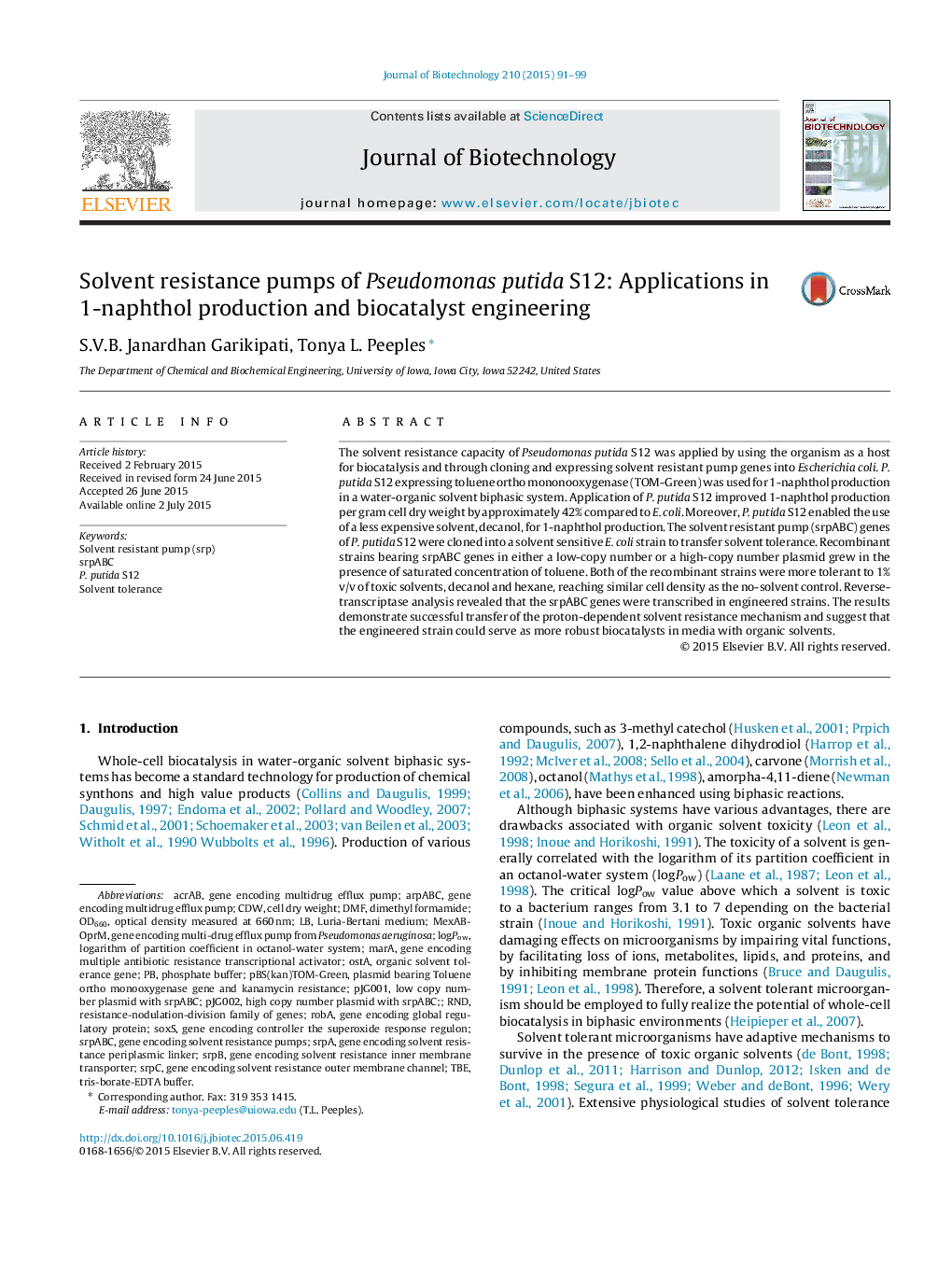| Article ID | Journal | Published Year | Pages | File Type |
|---|---|---|---|---|
| 6491001 | Journal of Biotechnology | 2015 | 9 Pages |
Abstract
The solvent resistance capacity of Pseudomonas putida S12 was applied by using the organism as a host for biocatalysis and through cloning and expressing solvent resistant pump genes into Escherichia coli. P. putida S12 expressing toluene ortho mononooxygenase (TOM-Green) was used for 1-naphthol production in a water-organic solvent biphasic system. Application of P. putida S12 improved 1-naphthol production per gram cell dry weight by approximately 42% compared to E. coli. Moreover, P. putida S12 enabled the use of a less expensive solvent, decanol, for 1-naphthol production. The solvent resistant pump (srpABC) genes of P. putida S12 were cloned into a solvent sensitive E. coli strain to transfer solvent tolerance. Recombinant strains bearing srpABC genes in either a low-copy number or a high-copy number plasmid grew in the presence of saturated concentration of toluene. Both of the recombinant strains were more tolerant to 1% v/v of toxic solvents, decanol and hexane, reaching similar cell density as the no-solvent control. Reverse-transcriptase analysis revealed that the srpABC genes were transcribed in engineered strains. The results demonstrate successful transfer of the proton-dependent solvent resistance mechanism and suggest that the engineered strain could serve as more robust biocatalysts in media with organic solvents.
Keywords
Related Topics
Physical Sciences and Engineering
Chemical Engineering
Bioengineering
Authors
S.V.B. Janardhan Garikipati, Tonya L. Peeples,
